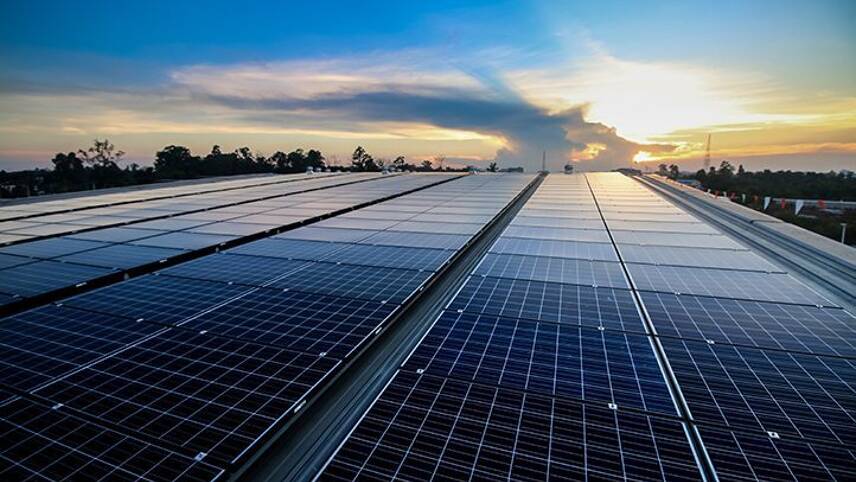Register for free and continue reading
Join our growing army of changemakers and get unlimited access to our premium content

The Asia Pacific region accounted for the majority of investments
BNEF’s new Energy Transition Investment Trends 2022 report examined the total expenditure from corporates, financial institutions and governments on the low-carbon energy transition.
The report found that investments in 2021 totalled £560bn, across renewable energy, storage, electrified transport and heat, nuclear, hydrogen, carbon capture and storage (CCS) and sustainable materials. Across all of these sectors, only CCS received investments lower than its 2020 levels. In total, investments levels were 21% higher than those recorded in 2020.
Investment in renewable energy reached £273bn in 2021, a 6.5% increase from 2020 levels. Electric transport received £204bn and BNEF anticipates that a surge in EV sales could see the sector overtake renewables in terms of investments this year.
Combined, clean energy and transport secured £546bn in investment, with hydrogen, CCS and sustainable materials making up the final £18bn.
BNEF’s head of analysis Albert Cheung said: “The global commodities crunch has created new challenges for the clean energy sector, raising input costs for key technologies like solar modules, wind turbines and battery packs.
“Against this backdrop, a 27% increase in energy transition investment in 2021 is an encouraging sign that investors, governments and businesses are more committed than ever to the low-carbon transition, and see it as part of the solution for the current turmoil in energy markets.”
BNEF found that the Asia Pacific region was the largest in terms of total investment at £275bn, a 38% year-on-year increase. Across EMEA, investment levels increased by 16%, while the Americas delivered a 21% increase in investments.
China was the single-largest investor in clean energy and technologies, committing more than £194bn last year. Indeed, China’s recent clean energy drive has seen the nation leapfrog the UK as the world leader in offshore wind capacity, with research revealing that the nation added more capacity in 2021 than what the world had produced over a five-year period.
China installed 26GW of new offshore wind capacity in 2021, the nation’s Energy Administration revealed. This massive increase means that China now accounts for more than half of the world’s total offshore wind capacity and Carbon Brief has since confirmed that the 26GW added in 2021 is more than what the entire world has produced over a five-year period.
The US was the second-highest spender on clean energy in 2021, at $114bn, while the European Union (EU) committed $154bn. Individually, Germany, the UK and France round out the top five nations.
Net-zero needs
However, BNEF’s research also notes that the required investment levels into clean energy will likely need to triple, at an average of $2.1trn annually between 2022-25, in order to the world to reach net-zero emissions by mid-century. In fact, investment levels would then need to double again to $4.2trn annually between 2025 and 2030.
Recent research from McKinsey examined the sectors that are accountable for 85% of all emissions across 69 nations. The report examines how demand, spending and jobs would change in order to reach net-zero.
The report claims that, between 2021 and 2050, capital expenditure on assets for energy and land-use systems tailored towards net-zero would reach $275trn and around $9.2trn annually, almost three times greater than the current annual spend. An additional 1trn on today’s annual spending would also need to be relocated from high-emitting sectors to new low-carbon assets. McKinsey starts that this increase is equivalent to half of the recorded profits from corporates globally in 2020.
This spending, the report claims, would need to be front-loaded to deliver drastic levels of decarbonisation. It would need to rise from 6.8% of GDP today to 8.8% between 2026 and 2030, as which point it starts to fall. While these spending requirements are large, McKinsey believes they will have “favourable return profiles”.
Matt Mace


Please login or Register to leave a comment.